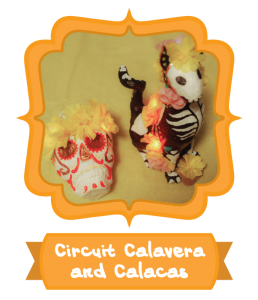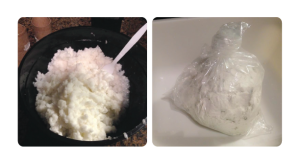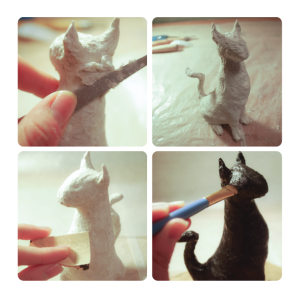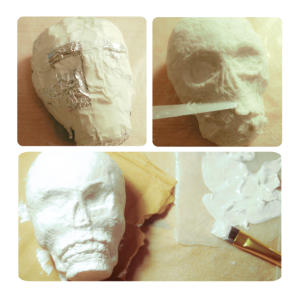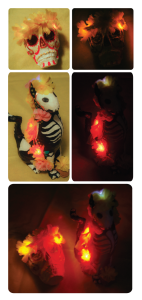October is a month of many holidays and raising awareness and though Halloween is one of the most well recognized holidays of the month, there is another following that is well celebrated across Latin America and the United States. When Halloween starts to come to a close the Mexican holiday El Día de los Muertos, translated as Day of the Dead, begins. Spirits descend to reunite with their families for one day for music, games, and sharing stories. In preparation for Day of the Dead, families come together to create a thoughtful alter bountiful in marigold flowers with photographic memorabilia surrounded by candle light of their loved. Within days of the holiday bread is baked, fresh fruit is collected, and artisans cater decedent, decorative sweets and sculptures. These sculptures range from edibles to masks embodying calavera and calacas, an artistic representation of skulls and skeleton figures, often made with sugar, papier-mâché, or clay as tribute to loved ones.
Inspired by the artisans of cartonería, papier-mâché sculpture, the Circuit calavera and calacas project combines the traditional media of papier-mâché, paper folding, and clay crafted with circuitry. The skull and cat calavera represent personal loved ones with a very simple motif on the skull inspired by my Puerto Rican heritage.
To make basic paper clay, this air-drying papier-mâché clay recipe was used found online at this website:http://www.ultimatepapermache.com/paper-mache-clay, with some slight alterations to have higher paper pulp content for a more handmade, papery aesthetic.
Armatures were made of tightly rolled bags, a little aluminum foil, and masking tape for a surface to sculpt paper clay and take shape. The clay on the armature would take up hours to dry, patched up with small pieces of wet clay, dried, sanded, dusted, then painted with acrylics before adding copper tape. Be warned, copper tape doesn’t adhere well directly to acrylic paint, so you have to lightly sand a path on the clay or acrylic surface before laying the tape.
It was tricky to lay circuit stickers on curved surfaces and required pressure on the copper ends of the stickers by pressing with the tip of tweezers. Jie’s paper battery holder template was used on each sculpture to house and power the circuit stickers. The skull calavera battery holder was hidden behind for additional pressure when the sculpture was laid on the table to help the battery have a good contact with the copper tape. However, on the cat the battery holder acts as a visual prop. You can find the paper battery template at this link: http://simonetti.media.mit.edu/~jieqi/2012/01/paper-battery-holder-tutorial/
Yellow tissue paper was folded to make beautiful marigolds placed on top of yellow LED stickers shining through for contrast between the tissue folds. Another idea was to place the paper marigolds and pink carnations on top of red and white LED stickers for a colorful spectrum glowing through the translucent tissue. In the light or in the dark, the calavera had a nice brightness.
Though it could have been hidden, the copper tape was purposely placed on top of the sculpture surface to show the circuitry design, however you could think of other ways to apply the copper tape exposed on the surface or even hidden underneath layers of the sculpture!
Project and documentation made by Lindsay Balfour, a Maker Educator.

